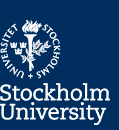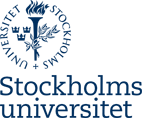Lectures at the Department of Economics started in 1888 (Stockholm University was founded ten years earlier, in 1878). The lectures were given by Johan Leffler who had obtained his position in competition with Knut Wicksell. In 1904, Gustav Cassel became the first professor at the department. He originally studied mathematics (he wrote a dissertation on linear algebra), but later turned to economics. Cassel is known for his development of general equilibrium theory, the most interesting aspect perhaps being a model of proportional growth. During the 1920‘s, he was one of the most prominent economists in the world, widely lecturing on monetary problems.
Cassel left his chair in 1933 and was succeeded by his pupil Gunnar Myrdal. Myrdal‘s dissertation, Pricing and Change, introduced intertemporal planning and risk into price theory. Erik Lindahl, at the time lecturing at the department, is mentioned in the preface for his advice. Lindahl‘s own development of intertemporal and temporary equilibrium theory in the late 1920‘s was, in turn, influenced by Myrdal‘s analysis.
In 1921, a second chair was created with Gösta Bagge as its first professor. Bagge‘s early work concerned wage setting under trade unions. As a professor, he played an important role as entrepreneur, channeling money from the Rockefeller Foundation to a grand empirical investigation of wages and national income in Sweden.
In the 1930‘s, several members of the department were involved in the development of employment theory. Gunnar Myrdal, Gösta Bagge, Alf Johansson and Dag Hammarskjöld contributed to the Unemployment Commission. In the second part of the 1930‘s, Erik Lundberg and Ingvar Svennilson defended doctoral dissertations offering important theoretical contributions to the Stockholm School. The name of the school was coined by Bertil Ohlin in two articles in Economic Journal, where he argued that the central themes of Keynes‘ employment theory had been independently developed by the Swedish economists, most of whom worked in Stockholm.
After his graduation, Erik Lundberg became head of Konjunkturinstitutet (the National Institute of Economic Research) but returned to the department as a professor in 1946. However, he did not act as a full-time professor until 1955, when leaving Konjunkturinstitutet. Lundberg‘s overview of business cycles and stabilization policy from 1953 (Konjunkturer och ekonomisk politik, translated into English as Business Cycles and Economic Policy, 1957) formed a generation of students in Keynesian fiscal and monetary policy. The impact of Lundberg‘s impressive personality was not less important.
Ingvar Svennilson was head of Industrins Utredningsinstitut (The Research Institute of Industrial Economics) 1942-51. He became professor in 1947. In parallel with his professorship, he played an important role in the development of the Medium Term Surveys (Långtidsutredningarna) of the Swedish government.
In 1953, Anders Östlind succeeded Kjeld Philip (for Philip, see below). Östlind had written a dissertation on Swedish monetary problems during the period 1914-22.
In the late 1950‘s and the early 1960‘s, three professors, Lundberg, Svennilson and Östlind, were predominant at the department. This was before mathematical economics had made its great impact on research and before economics in Sweden had become fully integrated with the international scientific society. This transformation started already in the 1960‘s, but was not completed until the late 1980‘s.
Two of the alumni of the department have been awarded the Nobel Prize, Gunnar Myrdal (1974) and Bertil Ohlin (1977). One alumnus, Dag Hammarskjöld, served as Secretary-General of the United Nations. Several members of the department have played an important role in Swedish politics: Bertil Ohlin and Gösta Bagge were leaders of political parties, and both Bagge and Ohlin, as well as Karin Kock (acting professor 1938-46) and Gunnar Myrdal, also served some time as Cabinet Ministers. In addition, Kjeld Philip, who was professor at the department 1949-51, later became Minister of Finance in Denmark.
The history of the department is summarized in Svante Nycander‘s book Från värde till välfärdsteori – nationalekonomin vid Stockholms högskola/Stockholms universitet 1904-2004 (SNS Förlag, 2005). The book also contains chapters written by Eskil Wadensjö (about Gösta Bagge) and by Jonas Agell and Hans Wijkander (about the department after 1990). It was presented at a seminar on December 2, 2004 celebrating the 100th anniversary of Gustav Cassel‘s appointment as professor of the department. The scientific work by Peter Bohm (1935-2005) is surveyed by Glenn Harrison and Martin Dufwenberg in Working Paper 2007:18 from the department (see also Experimental Economics, No. 3, September 2008). Bohm – who was professor at the department from 1975 until 2000 – is considered by Harrison and Dufwenberg as the father of modern field experiments in economics.
The history of the department
Last updated:
April 23, 2014
Source: Department of Economics



